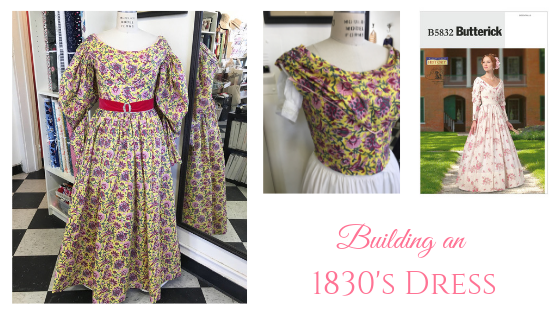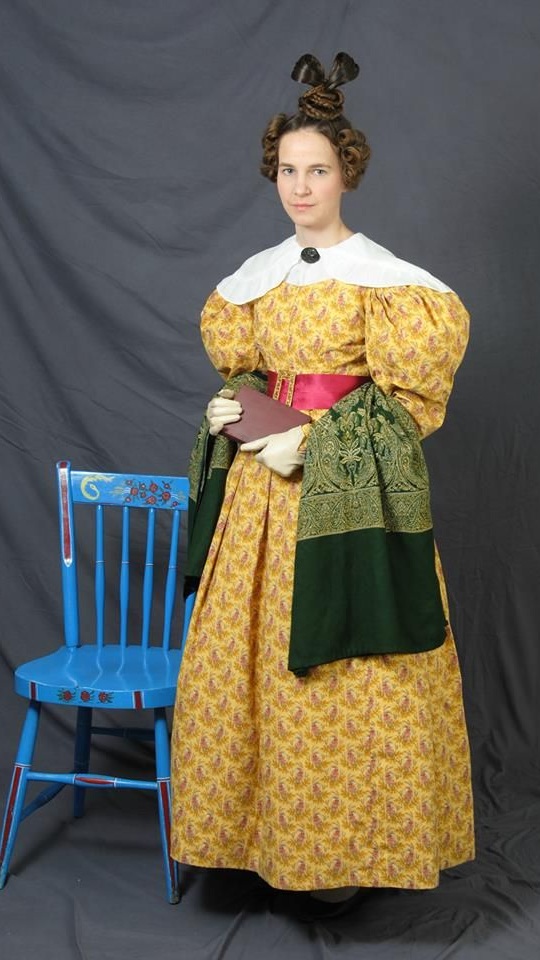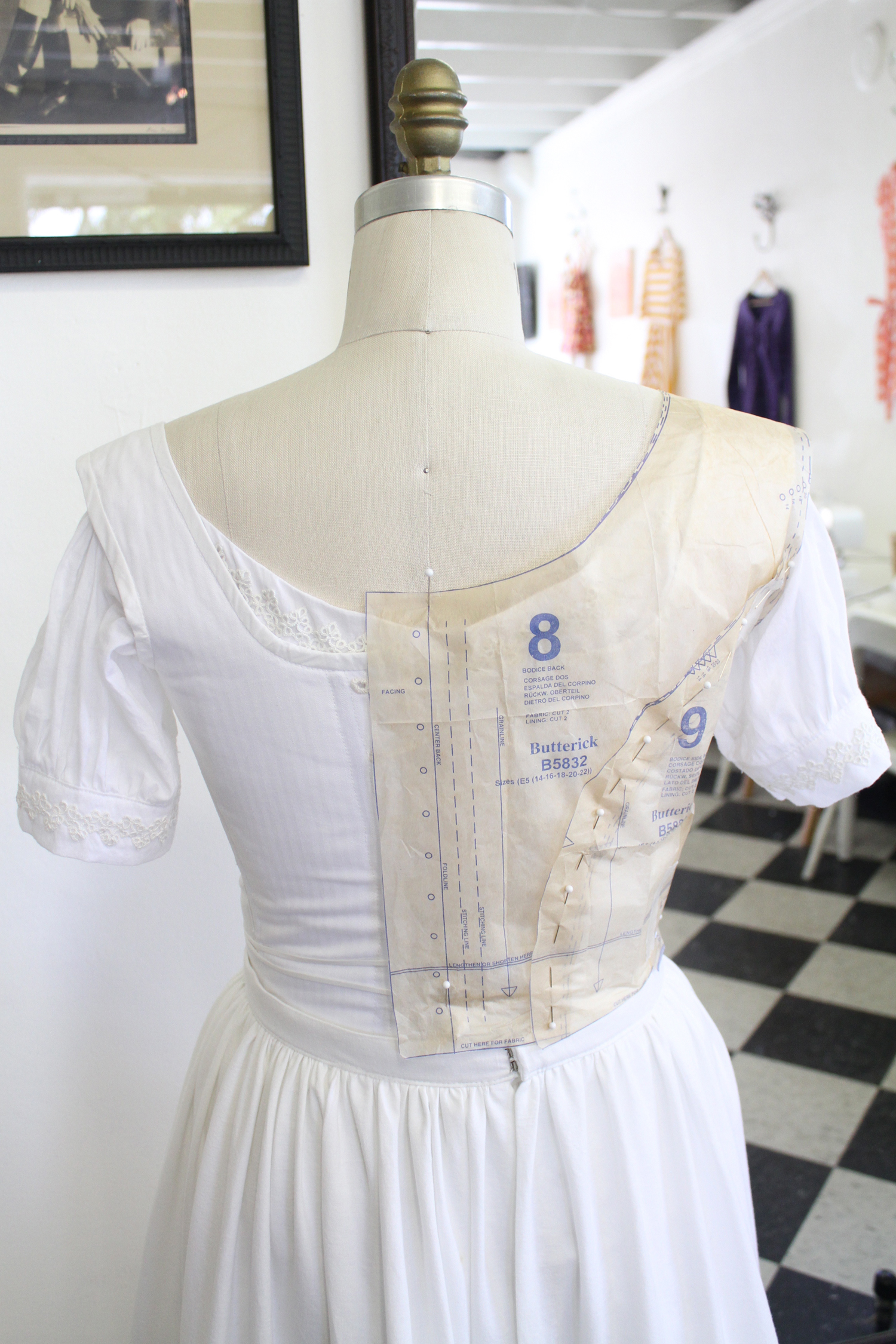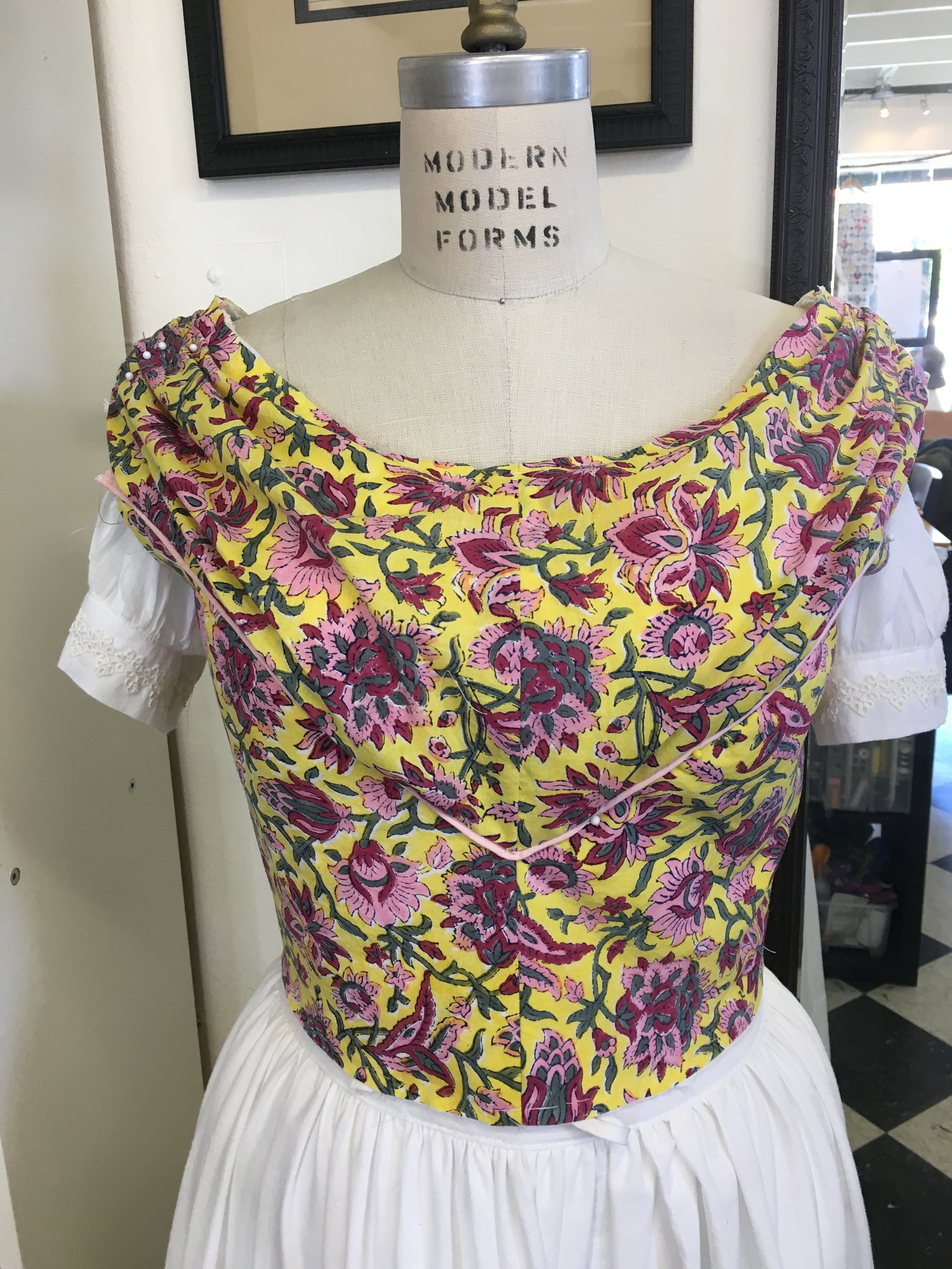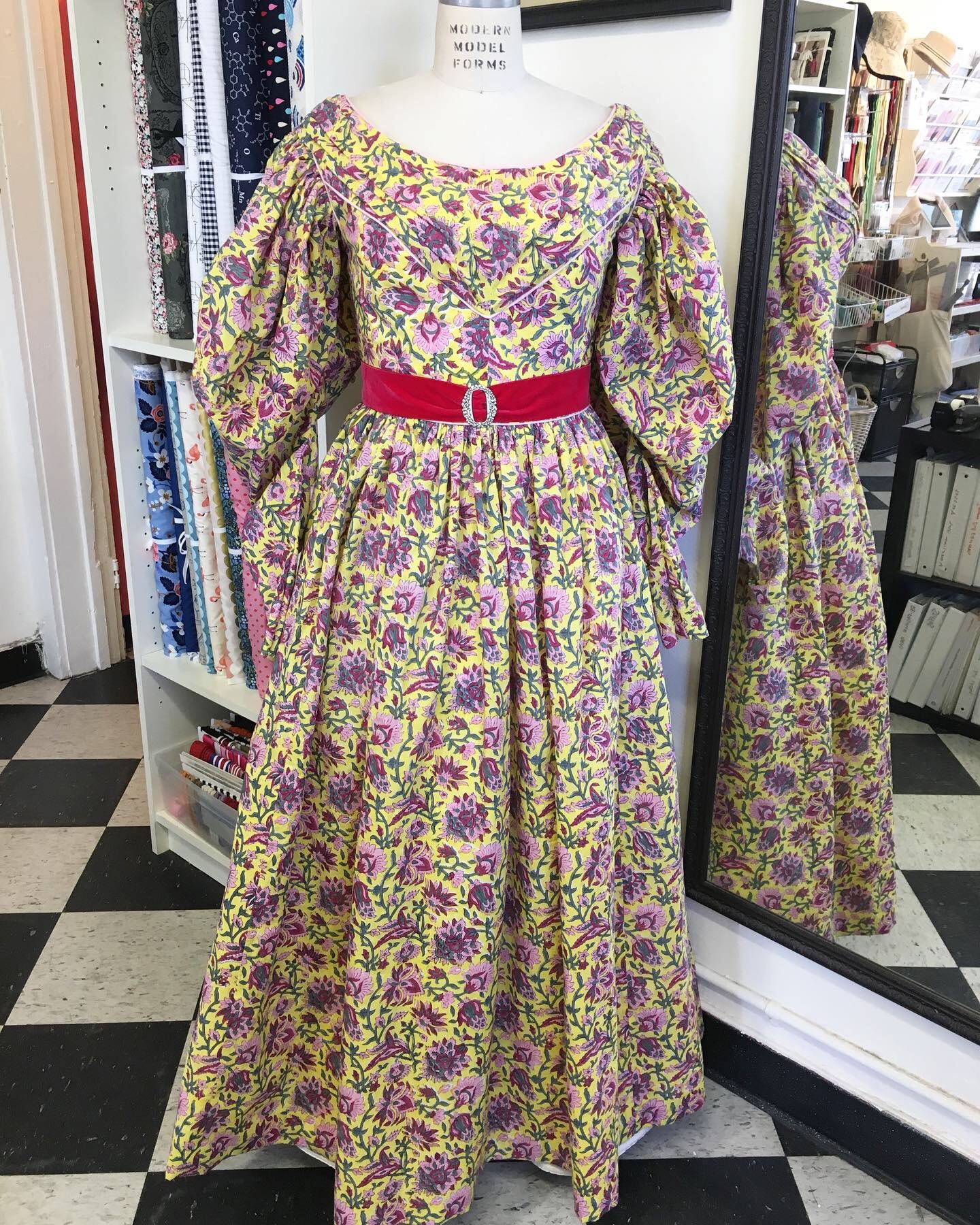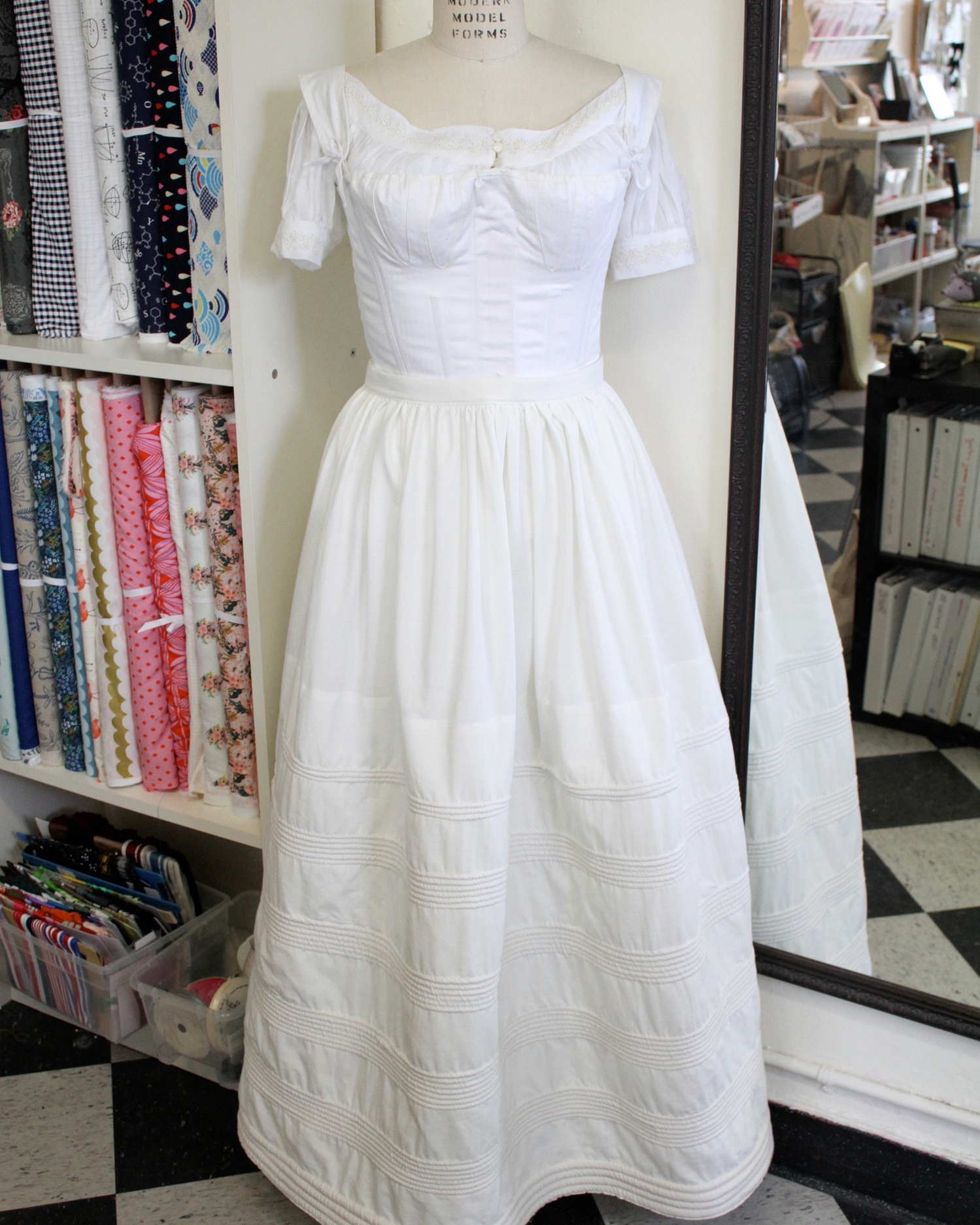With the impending date of an 1830’s Romantics Era picnic at Ardenwood Farm put on by the Greater Bay Area Costumer’s Guild, I commenced work on my gown. Pinterest was the first place I headed for inspiration. There are so many examples of dresses from the era, it was easy to find several that I could draw from for designs. Finding fabric was next and then building all the undergarments. I never did finish ALL of the undergarments, but I did make a set of stays, a shift, drawers (aka bloomers) and a corded petticoat. And I was also gifted a second petticoat that helped fill out the dress as well. Hard to believe there should be MORE underneath the gown, but there is - Sleeve puffers, some additional petticoats and a bum ruffle. I’ll save that for next time or for the Dicken’s Faire.
V & A Museum Dress from the Era
This image really shows the Silhouette of the era with it’s bouffant sleeves, open neckline and nipped in waist. That was the look I was really trying to achieve and I think, for the most part, I made it work. The sleeves on my dress would be this big if I had puffers inside. But that was just more than I could do, this time around.
These images were good examples of fabrics and accessories that I found intriguing. In the end, I picked a block print cotton voile purchased on Etsy from India. Sadly, the shop where I bought it does not seem to exist on Etsy any longer. The busy-ness of the fabric as well as it’s origins seems appropriate for the time. I also really love the contrast belt and buck. It really accentuates the nipped in waist, don’t you think?
For the construction of the gown, I started with the Butterick B5832 pattern purchased from Barbara’s Boutique Shop (also on Etsy). In the end, I just used the lining and forwent the other pieces entirely as my dress was so much different in the sleeve s and over body style lines.
I did spend a good amount of time watching videos by American Duchess on Youtube. They actually did videos for almost every aspect of the 1830’s from stays, to corded petticoats to bum ruffle and skirt construction. They also talked about 1830’s sleeve patterns, which came in handy when I got to that part.
I highly recommend checking out their YouTube feed or joining their Patreon group if you are interested in historical costuming. It really was quite helpful in putting together my entire outfit.
I started the process by doing a tissue paper fitting of the lining, on my dressform. Before I did the fitting, I put the underpinnings on the form and stuffed them to my measurements. It worked really well.
It’s a little hard to see in this photo, but I’ve pivoted out fullness that was in the arm, and added it to the dart at the front waist.
After fitting the lining, I sewed a mock up in muslin and began draping the outer bodice, over the muslin lining.
After the drape was finished, I transferred the pieces to the fashion fabric and then draped those pieces onto the lining foundation (two layers of cotton fabric), inserted piping and hand stitched the pleating as well as all of the other pieces, in place. Piping was then added to the neckline, waistline and armholes, as well.
The skirt was created using 3 panels of fabric that were my desired length. They were sewn end to end to create a tube with the opening in the back. The skirt hem was finished by sewing a 22” deep cotton organdy border to the entire bottom edge, which was then stitched to secure at the the top and bottom edges, on the inside of the skirt. The waist was gathered and then sewing onto the bodice.
diagram found in this article by Marmota’s Dress Diaries
I had watched the video about 1830’s sleeves by American Duchess and remembered that each sleeve took about a yard of fabric. They had changed the Patreon tier levels so the sleeve pattern, itself, was no longer available to me. Ugh. I had to find a sleeve pattern or come up with one on my own. Time was getting short about now, so I decided to go on memory and see if I could find some images supporting my that memory - yikes!
So, I looked online and found a few images and then measured my forearms so the bottom of the sleeves would fit snuggly from below the elbow to the wrist. I ended up winging it and the pattern looked very much like figure 18 above.
Here you can see the finished dress, with my underpinnings to the right.
The dress was finished at the back after a fitting, with me wearing everything underneath. I hadn’t tried any of it on with my undergarments prior to this point. That was pretty lucky, really. Bar hooks were used on the back bodice closure. The skirt overlaps at the back opening so there is no need for closures on the skirt. I tacked the velvet ribbon with buckle to the waist seam and stitched hook bar closures on the ends to close it.
After trying on the whole ensemble, it could be a few inches shorter. It comes almost to the ground which makes it somewhat difficult to walk around in. And, after seeing everyone at the picnic in dresses as high as 6-8” off the ground, I’m feeling like it was definitely too long. Oh well. It can always be shortened!
For a first attempt at an historic dress, I’m fairly pleased.
It was on schedule and wearable, Check. Pretty colors and fit me, Check. Next, onto the bonnet!
Until Next Time, Happy Sewing!
xo Jennifer

